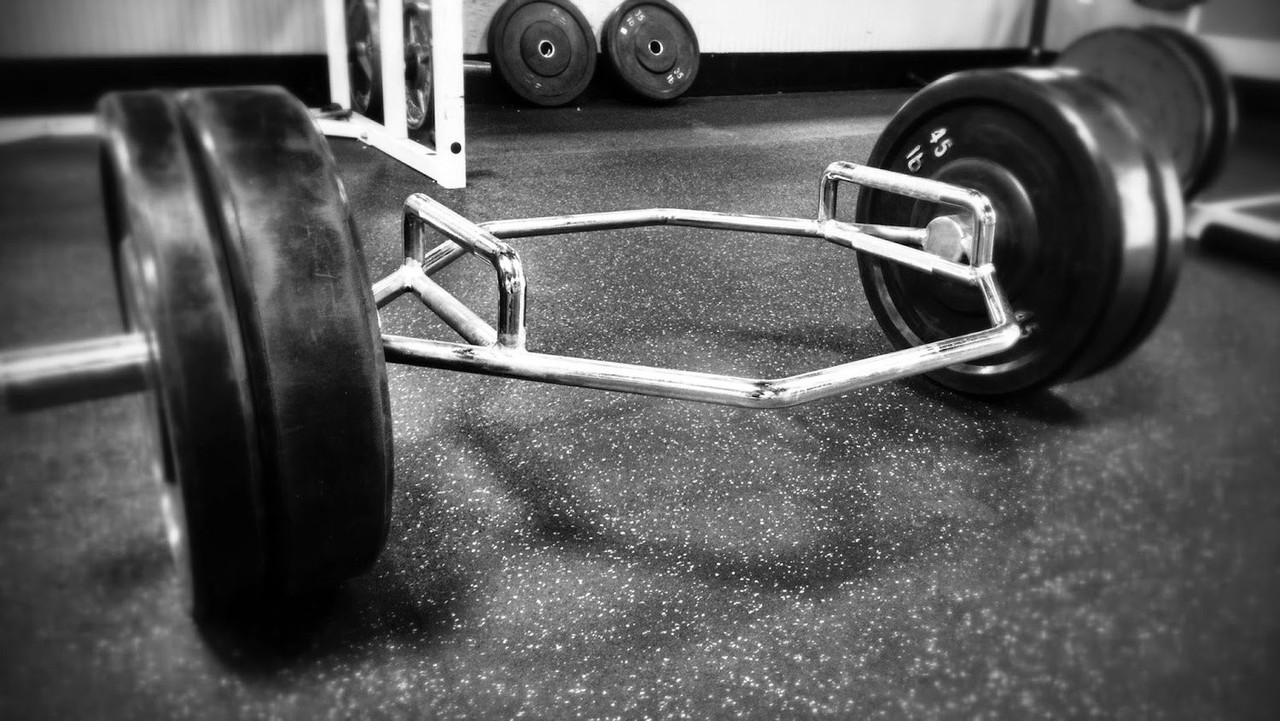Richardbrown
Approved Source

This versatile workout tool can be used for a lot more than just pulls.
Al Gerard created the trap bar in the late 1980s as a simpler way to perform shrugs, which is how the trap bar earned its name. And who doesn't enjoy working out their upper back biceps and traps? A large set of traps is like the cherry on top of a well-built body, but incorporating trap bar training into your regimen may lead to so much more.
This post will go over the advantages of using a trap bar as well as six fantastic exercises that don't use deadlifts or shrugs.
DESIGN OF THE TRAP BAR
Trap bars typically have two pairs of handles: one set of D handles, which extend upward in the shape of a squared D from the bar, and the other pair, which is flush with the bar. And either pair is accessible by flipping the bar over. The range of motion required to pick it up off the ground is shorter with the D handles and longer with the level ones. The weight-bearing stubs on either side are angled at a right angle to the handles.
You can step within the bar thanks to the hex design of the trap bar and the stubs, which brings the weight closer to your center of gravity. For lifters who have a history of low back problems or who want to reduce their risk of injury while still lifting heavy, this is a godsend.
BENEFITS OF TRAP BAR TRAINING
Training with the trap bar instead of the barbell has a few significant advantages in addition to making it simpler to exercise your traps vigorously and heavily.
Compared to a mixed grip on a barbell, the neutral grasp of the trap bar lowers the likelihood of biceps rips. You can go hard like that without worrying about being hurt. Additionally, compared to a pronated or supinated grip, the neutral grip is easier on the forearms and elbows, aiding in the development of incredible grip strength. Our strongest grasp is the neutral grip.
Because the axis of rotation is roughly parallel to the weight on either side, there is less shearing force on the spine. If your lower back is bothering you, this is fantastic since it lessens the amount of shearing stress on the spine.
Compared to the barbell, the trap bar makes it simpler to learn difficult exercises like the deadlift and squat. It's quite forgiving when performing trap bar squats and deadlifts as long as you maintain a neutral spine.
6 TRAP BAR EXERCISES
Although trap bar deadlift and shrug variations are excellent, those aren't the only workouts you should do with one. Here are six trap bar workouts for diversity and improvement in your regimen.
1. Trap Bar Floor Press
If you have shoulder problems, the majority of floor press workout variations prevent the shoulder joint from excessive external rotation. If you have any issues with your wrists, elbows, or shoulders, the neutral grip trap bar floor press is easier on your upper body joints. The loading potential of the trap bar floor press over dumbbells for more strength and muscle is another benefit.
Anterior shoulder, chest, and triceps muscles are worked out.
Benefits: If you suffer from bench press shoulder pain, the trap bar floor press variation enables you to train the pressing motion in a heavy and painful-free range of motion.
How to perform it: Position the trap bar on the squat rack such that you can reach underneath it and that the D handles are down. With your feet flat on the floor, your back straight, and your wrists in neutral, grab it and unrack. Until lockout, slowly lower until the triceps are in contact with the floor, then press back up. Restart and continue.
It is recommended to use this workout to develop muscle and improve lockout strength. Here, three to five sets of six to twelve repetitions are ideal.
2. Bent Over Row on Trap Bar
With a neutral grip and a center of gravity that is closer to the weight than the barbell version, the trap bar bent over row is less taxing on your joints. Additionally, the setup is a little simpler. The wider neutral grip will put more strain on your upper back muscles while relieving some of the pressure from your lower back. Your posterior gains are positively impacted by this.
Forearms, biceps, the posterior shoulder, the upper and lower back, and the lats were worked out.
Benefits: Due to the grip strength requirements and the length of time spent in the hinge position, this exercise is a fantastic complement to deadlifts and chin-ups.
How to perform it: Step within the trap bar, hinge down, and grab the D handles to complete the move. Pull your shoulder blades together, lift your chest, and row such that the back of the bar hits your glutes. Throughout the workout, make sure your elbows are angled at a 45-degree angle. Slowly lower yourself until your elbows are outstretched, then slowly rise back up.
The following workout is excellent for boosting power and developing posterior muscle. A decent place to start is with three to five sets of six repetitions for strength and two to four sets of 12 to 15 repetitions for muscle.
Page 1








